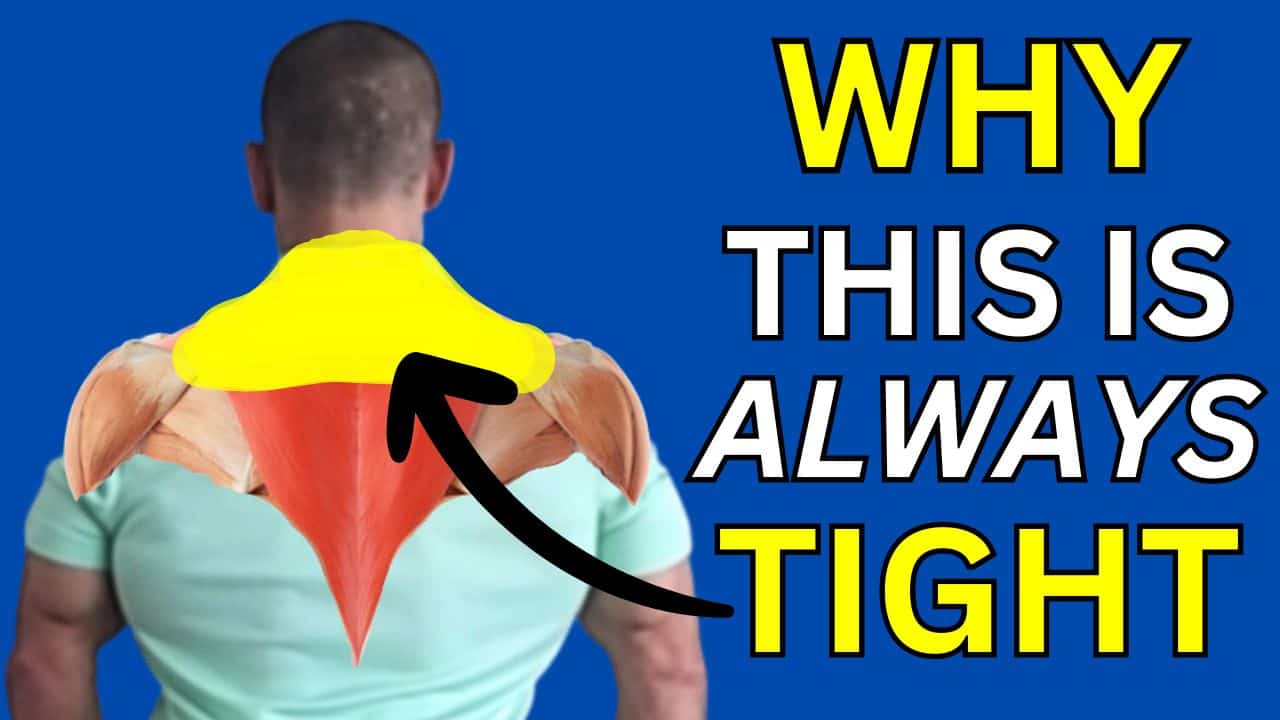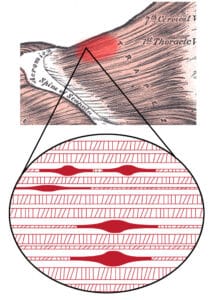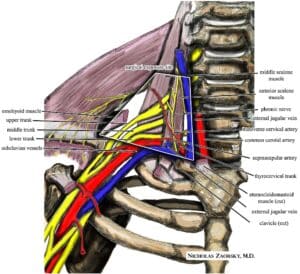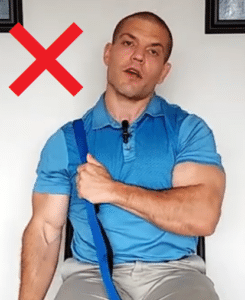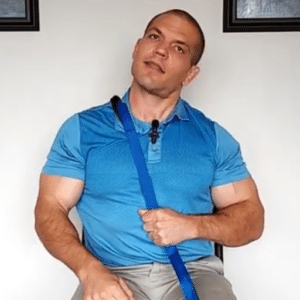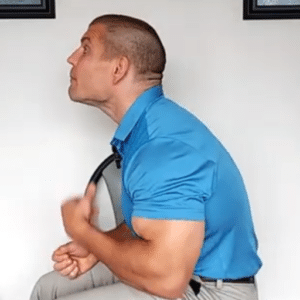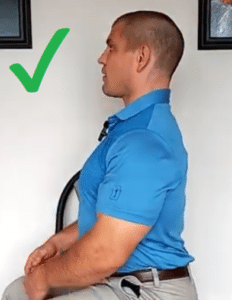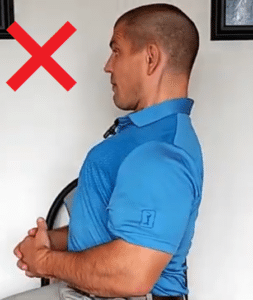Do you ever wonder why your neck and shoulders are always tight? Do you get stiff, tender knots in in your neck, shoulders, and upper back? Watch this video to learn tricks and tips to get short, medium, and long-term relief from neck pain and stiffness.
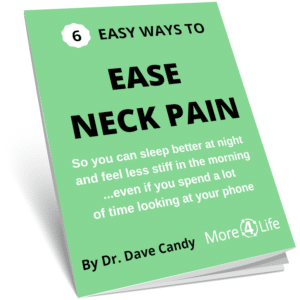
What Causes Stiffness and Tightness?
Before we get into the solutions, we need to really understand what causes that stiffness or tightness in the shoulder muscles in the first place.
A lot of that tightness is caused by sustained postures and particularly sustained low-level muscle contractions.
There's something called the Henneman's size principle, otherwise known as the Cinderella hypothesis, which states that motor units are recruited in order from the smallest units to the largest units.
What that means is small groups of muscle fibers are activated during low-level tasks and are pretty much continuously active.
There are studies that show you start to develop knots or trigger points in your neck muscles in as little as 30 minutes of continuous typing.
If you spend a lot of time on a computer or on a smartphone, you can start to develop stiffness or tightness in your shoulder muscles, even if you have good posture,
If you have forward head and rounded shoulder posture or lack of arm support, that further compounds the problem.
But the good news is there are some ways to relieve that stiffness or tightness rather quickly. Additionally, there are ways that you can keep it from coming back in the future.
Immediate Relief Technique for Tight Neck and Shoulder Muscles
What do you do if you have stiffness and tightness right now and you want to get it to go away quickly?
One great way to do that is by doing some manual trigger point therapy, or basically pressure point therapy.
What you'll do is find the tight area by finding a knot in your shoulder or upper trapezius muscles using your fingers.
,
Once you find a spot that's most knotted, most stiff, or most tender, hold a gentle pressure on it for 90-180 seconds (1.5 - 3 minutes)
Stretches for Tight Neck and Shoulder Muscles
After you've done that, it is probably a good idea to stretch the muscles.
If the shoulder blade on the sore side is higher than the shoulder blade on the other side, it is a good idea to stretch the upper trapezius muscle.
However, if the shoulder blade is lower on that side, you DON'T want to stretch your upper trapezius.
Scalene Stretch / First Rib Mobilization
There's another set of muscles that commonly get tight in the neck called the scalene muscles.
Those muscles attach to your first rib, and just stretching like this just pulls your first rib up even higher.
To stretch your scalenes, you need to use a towel, belt, or stretching strap to hold your first rib down.
RangeMaster FlexAbility Static Stretch S...
$12.77 (as of January 12, 2026 11:45 GMT -06:00 - More infoProduct prices and availability are accurate as of the date/time indicated and are subject to change. Any price and availability information displayed on [relevant Amazon Site(s), as applicable] at the time of purchase will apply to the purchase of this product.)Pull the belt, towel, or stretching strap over your shoulder so that it hit's close to the neck.
This is important because if the strap hits too far away from you neck, it's going to further depress your shoulder blade.
Pull the strap across your chest and down towards the opposite hip.
Then just do a slight side bend away from the shoulder that the strap is over.
Go back and forth in a gentle motion 10-15 times.
Wall Slide Exercise
Additionally, if the shoulder blade is lower on the painful side, here's another exercise that can help.
Stand facing towards the wall and slide your forearms up. Just when you think you've gotten as far up as you possibly can go, try to shrug up and reach just a little bit higher.
This shortens your upper trapezius muscles and also stretches your lat muscles, which pull your shoulder blades down.
This helps in the medium-term by stretching out the muscles that are pulling your shoulder blades down to begin with.
Posture and Long-Term Prevention
After you've done stretching exercises, what do you do to keep the pain and stiffness from coming back long-term?
Well, you may have guessed that it comes down to posture.
Avoid forward head posture when you're typing at a computer, driving a car, or looking at your smartphone.
Have your monitor set up or your phone set up so that you're looking slightly downward, just slightly below the horizontal.
Additionally, you want to try to keep your chin slightly tucked in.
You don't have to do a full-blown chicken neck.
Just a slight chin nod like that will help take some pressure off the nerve roots and off the neck muscles as well. It'll open up the spaces where the nerves come out of your neck.
Additionally, using arm supports is a good idea if you're typing for long periods of time.
The weight of your arms can start to pull down on your shoulders, putting tension on the shoulder muscles and compressing the nerves in your neck.
Additionally, if you remember, trigger points can start to develop in your neck after just 30 minutes of typing.
Therefore, you want to get up and move regularly. Taking breaks and not staying in a sustained tension position for long periods of time can help to relieve neck pain and tension.
If you're an office worker or you spend a lot of time in front of the computer, take intermittent breaks every hour or so.
Dry Needling For Tight Neck and Shoulder Muscles
What if you try all these tips and they don't work?
What if you still have just chronic, nagging muscle tension?
If you've had muscle tension for a long period of time, sometimes that can be kind of hard to get past that initial barrier.
If that's the case for you, there is a treatment called dry needling where you take little acupuncture needles and you put them into the stiff, knotted trigger points in the neck.
This is particularly good for people with chronic trigger points where those trigger points have been there for a long time, years in many cases.
People in that situation may have seen physical therapists, chiropractors, massage therapists, and the trigger points still haven't gone away.
I've seen cases from personal experience where in as little as one session of dry needling, people will get more relief than they've gotten in years of other treatments.
Now, it doesn't work that way for everyone, but if you're someone who's dealing with chronic, nagging muscle tension in your neck, dry needling may be something that could be helpful for you.
Conclusion
Hopefully you found those tips helpful if your neck and shoulders always feel tight.
If you are in the St. Louis area and you need some help for chronic neck tension, just tap the button below to request an appointment with one of our specialists.

